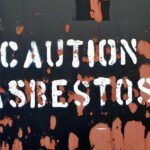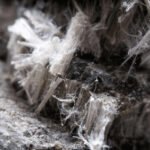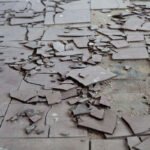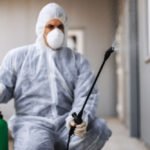After the Storm: Uncovering Hidden Hazards in Damaged Properties
The recent waves of severe storms across the Midwest—bringing hail, high winds, and torrential rain—have left behind more than just downed trees and broken shingles. They’ve opened up areas of homes, buildings, and commercial properties that were once sealed off, exposing potential environmental hazards that pose serious health risks to the people who live, work, or visit these spaces.
While the visible damage may be obvious—like shattered windows, torn siding, or roof collapse—it’s often what lies beneath the surface that demands urgent attention.
Asbestos Exposure: After Storm Damage
Asbestos was widely used in residential, commercial, and industrial construction throughout the 20th century due to its heat resistance and durability. Today, we know it’s a highly toxic carcinogen. If disturbed during storm damage, asbestos fibers can become airborne and remain in the air for long periods of time, increasing the risk of inhalation.
You might find asbestos in:
-
Old ceiling tiles
-
Pipe or duct insulation
-
Popcorn ceilings
-
Floor tiles
-
Roofing and siding shingles
Vermiculite Insulation: A Specific Asbestos Concern
Many older buildings contain vermiculite insulation, especially in attics and walls. A significant portion of vermiculite—particularly that mined from Libby, Montana—is contaminated with asbestos. If hail or structural collapse opens up these areas, it’s vital not to disturb or remove it without proper containment.
Mold: The Fastest Growing Threat
Water intrusion from roof leaks, flooding, or damaged siding creates the perfect environment for mold to grow—fast. Mold can begin colonizing within 24 to 48 hours, especially in dark, humid spaces like wall cavities, crawl spaces, and under floors. Mold exposure is linked to:
-
Respiratory irritation
-
Aggravated asthma
-
Allergic reactions
-
Long-term immune system effects
This is a threat in homes, schools, office buildings, and commercial facilities alike.
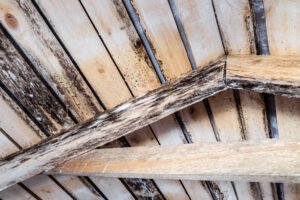
Lead-Based Paint and Other Lead Sources
Lead paint, once common in structures built before 1978, is still present in many properties. When storms cause peeling, cracking, or breakage of painted surfaces, it can release lead dust—a serious neurotoxin, especially dangerous to children and pregnant women.
Lead exposure isn’t limited to paint. It can also be found in:
-
Pipes and plumbing
-
Soil near older buildings
-
Windows and trim work
We Don’t Test—But Here’s Why That’s a Good Thing
At Dirty Ducts Cleaning & Environmental, we specialize in the actual removal process, not testing. But why? Because performing both would be a conflict of interest—we believe that testing should always be done by an independent, third-party professional to ensure unbiased results.
Once your property is tested and confirmed to contain hazardous materials, that’s when we step in. We work closely with certified environmental consultants who can assess your property and deliver lab-verified testing for asbestos, mold, lead, and more.
For all environmental testing we recommend you contact NorthStar Testing

Abatement and Remediation for Any Property Type
Whether it’s a single-family home, a school, a manufacturing facility, or a commercial office, we’re equipped to handle hazardous material removal with precision, safety, and compliance.
Our certified team can:
-
Abate asbestos from any building structure
-
Remediate mold from visible and hidden areas
-
Strip or encapsulate lead paint, and properly dispose of contaminated materials
- We even specialize in custom cleaning/removal services, so if you have a problem, we can likely take care of it!
We follow all OSHA, EPA, and state regulations, ensuring your property is cleared thoroughly and safely—minimizing downtime, maximizing safety, and restoring peace of mind.
Don’t Risk It—Call the Pros
If your property has been impacted by recent storms, now is the time to act. You don’t want hazardous materials circulating in the air, seeping into walls, or settling in your ventilation systems. These toxins are silent threats, and their presence can go unnoticed until they’ve already begun to impact health.
Dirty Ducts Cleaning & Environmental is here to help—serving residential, commercial, and industrial clients throughout the region. Let’s make sure your building is not only structurally sound—but environmentally safe.



